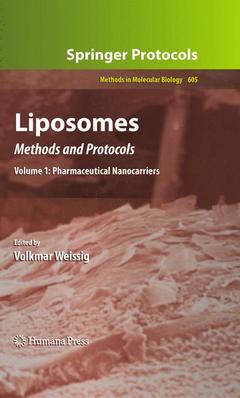Description
Liposomes, Softcover reprint of the original 1st ed. 2010
Methods and Protocols, Volume 1: Pharmaceutical Nanocarriers
Methods in Molecular Biology Series, Vol. 605
Coordinator: Weissig Volkmar
Language: English
Subjects for Liposomes:
Publication date: 08-2016
Support: Print on demand
Publication date: 12-2009
564 p. · 17.8x25.4 cm · Hardback
Description
/li>Contents
/li>Comment
/li>
Volume 1 specifically:
Covers all aspects of encapsulating hydrophilic and hydrophobic low-molecular weight molecules into liposomes
Analyzes comprehensively the current trends in liposome research
Provides an easily accessible and comprehensive reference volume for the applications of liposomes in Pharmaceutical Research and Development
With two volumes totaling 72 chapters, presents the first ever published comprehensive reference for the application of liposomes as pharmaceutical nanoscale drug delivery systems and as models for biological membranes
Provides in a very comprehensive way detailed guidance for the utilization of liposomes in Pharmacy, Chemistry, Biochemistry, Biophysics, and Molecular Biology
Offers a truly interdisciplinary approach to make the versatile features of liposomes accessible to a very wide range of investigators in Academia and Industry
Acts as a comprehensive guide to preparing, purifying, and physico-chemically characterizing all currently known types of liposomes
Includes supplementary material: sn.pub/extras
These books may interest you

Biophysical Approaches 52.74 €



